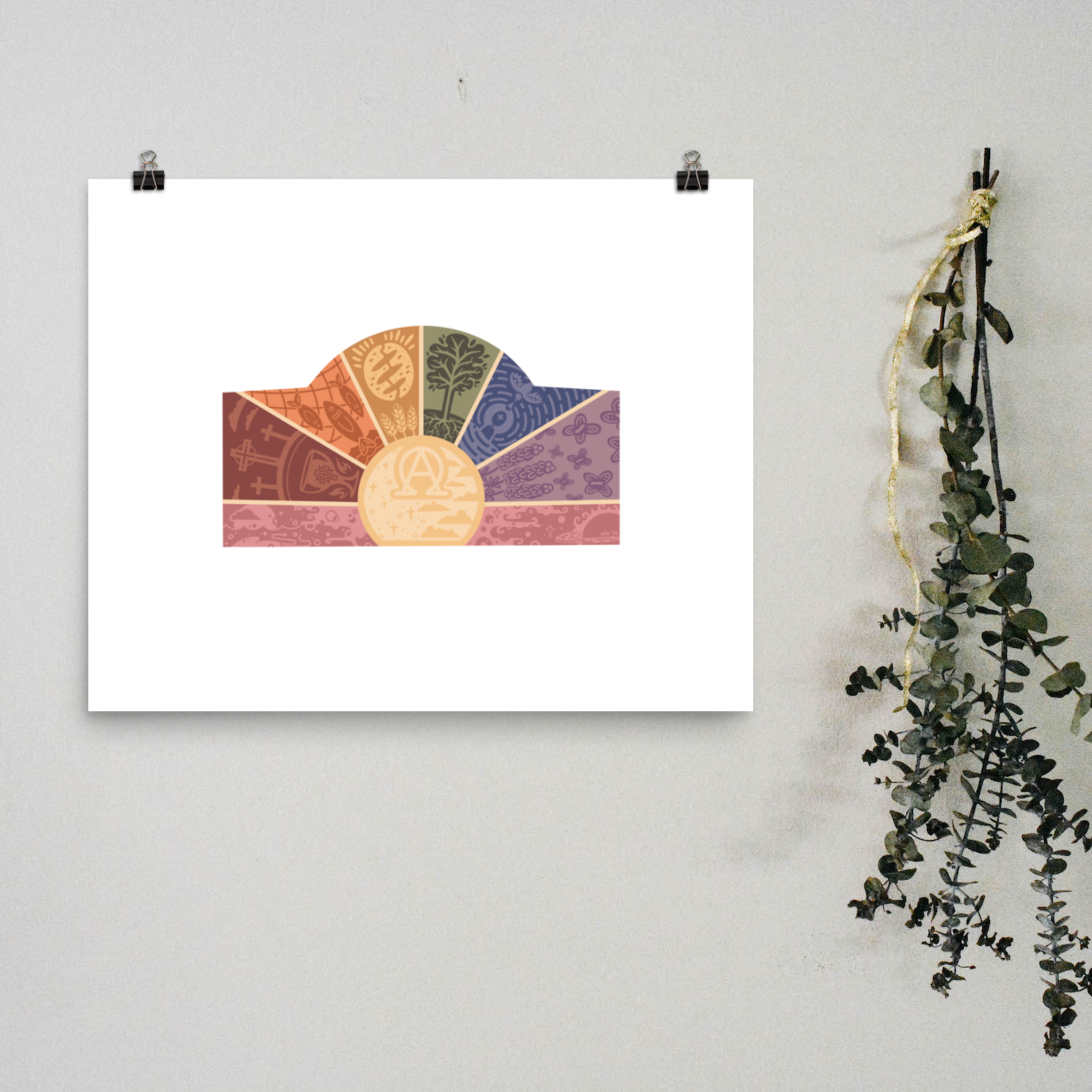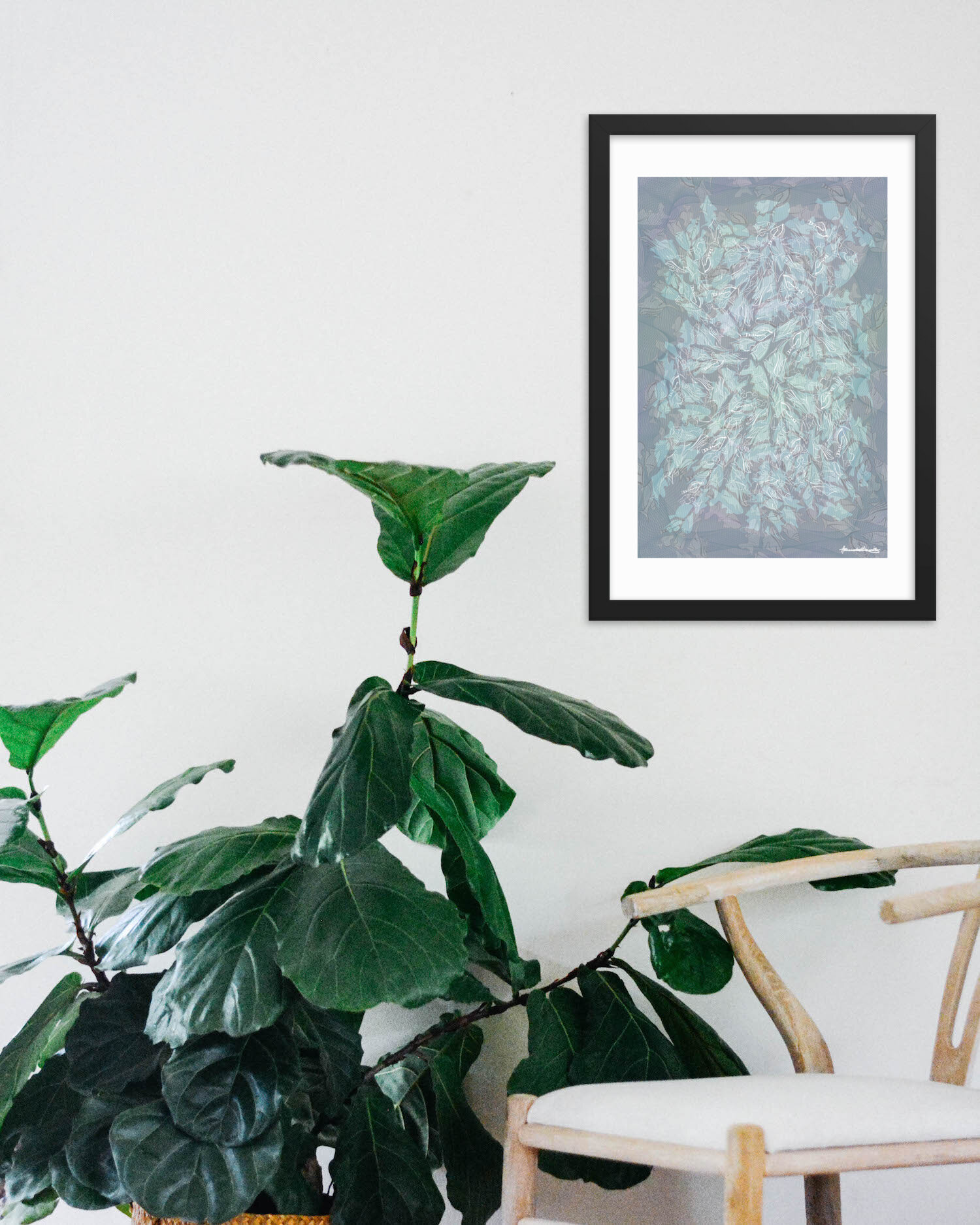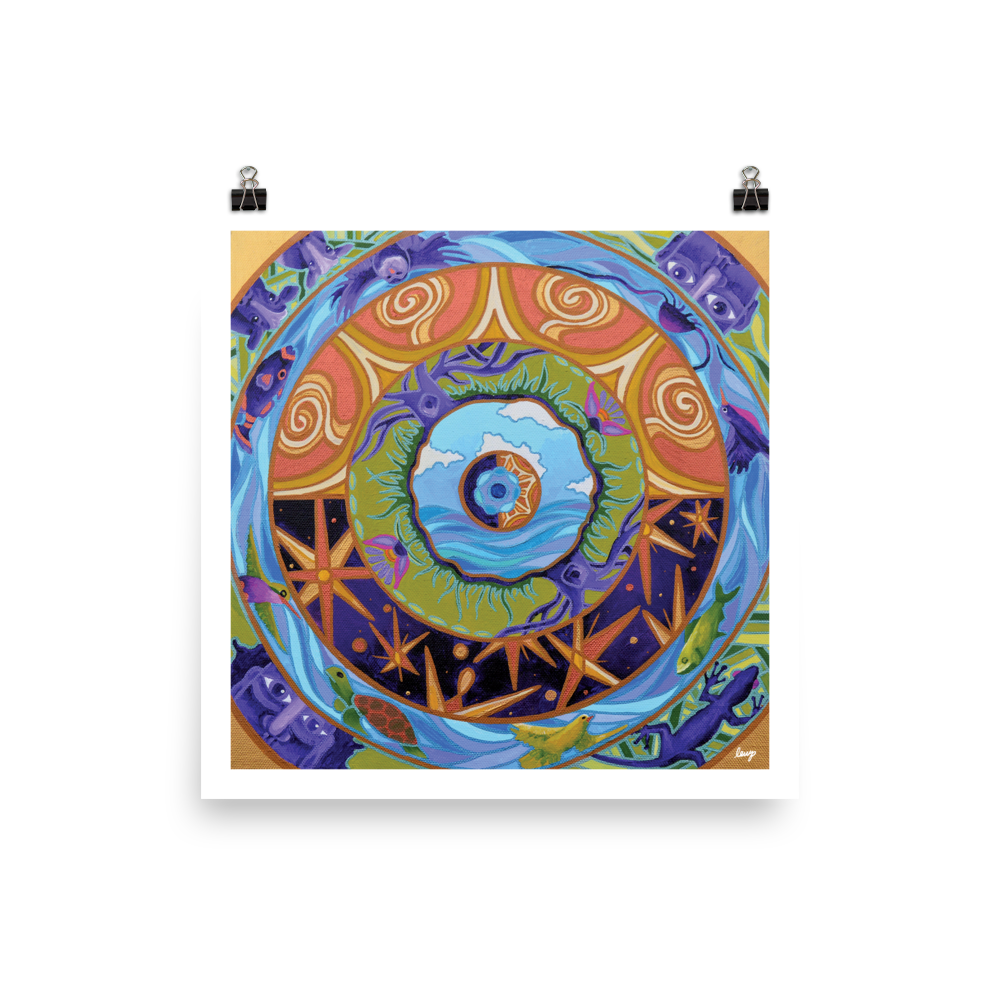Grace Beyond Belief by Anna Strickland






Grace Beyond Belief by Anna Strickland
Grace Beyond Belief
Digital painting
By Anna Strickland
Museum-quality poster made on thick, durable, matte paper. Unframed artwork will arrive rolled up in a protective tube.
Framing option available.
Print Details:
Museum-quality posters made on thick, durable, matte paper.
Paper is archival and acid-free.
Unframed prints arrive rolled up in a protective tube.
Frame Details:
Alder, Semi-hardwood frame
Black in color
.75” thick
Acrylite front protector
Lightweight
Hanging hardware included
Made in the USA
From the Artist:
Design and Center Section: Sunrise
When my father first asked whether I would be interested in designing a mural for our church to adorn the empty organ chamber as the pipes were away being refurbished for several months, he envisioned a colorful sunrise scene. To match with my art style and logistical constraints, I chose to abstract the sunrise into a central circle with bold, monochromatic rays in rainbow colors—appropriate as one of the months the mural would be visible would be June, Pride month. For the central symbol I chose the Alpha and Omega. This ancient Christian symbol comes from Revelation: “‘I am the Alpha and the Omega,’ says the Lord God, who is and who was and who is to come,” (Rev. 1:8) the beginning and the end. God is with us in our beginnings and endings, and They will surely be present in all the middles along the way, too. So it is with the sunrise. In Genesis, God creates night and day, dark and light. (Gen. 1:3-5) And yet, we know that there is so much more: dawn, dusk, sunrise, sunset, twilight. Rather than sunrise as an image of light breaking into the darkness (an image that has been used to perpetuate a dichotomy of light as good and dark as evil, dehumanizing God’s beloved dark-skinned children), I prefer to frame the sunrise as one of those liminal spaces where the Holy Spirit does her best work, a moment straddling dark, sacred night and the bright morning (imaged here by stars and clouds around the Alpha and Omega) — a holy in-between.
Red Section: Crucifixion
The only harsh corners in the mural are on the crosses in this section. Centuries of distance from Christ’s crucifixion has sanitized this symbol, turning it from a means of execution to an identity marker of “good Christians.” I placed the cross on the chalice surrounded by nails, both a sign of holy communion in which we are commanded to remember and proclaim Christ’s death (1 Cor. 11:25-26) and a reminder of Jesus’ final moments on the cross during which he is offered sour wine to drink. (Lk. 23:36) Small flames flank the chalice, an allusion to the way in which the church will start to grow like wildfire only weeks later. (Acts 2) The clouds in the sky are not only a literal representation of the physical shadow that surrounded Jesus during his execution, but also the spiritual cloud that hung around him as he cried out, “My God, my God, why have you forsaken me?” (Mk. 15:33-34)
Orange Section: Fish
Fish are one of the oldest Christian symbols and one of the most prominent in the early church. There are many times fish appear in Jesus’ ministry, from calling the earliest disciples to become fishers of people (Mt. 4:19) to the miraculous feeding of the thousands (Lk. 9:16). Here I’ve included three fish with a fishing net to reference one of my favorite fish stories (Jn. 21:1-17). After the resurrection, Jesus appears on the shore as the disciples are fishing. He tells them to cast their nets to the other side of the boat, which produces a bounty of fish. After this miracle, Peter runs to shore to eat breakfast with Jesus. Jesus offers him redemption in this moment, asking three times — one for each time Peter had denied him — “Peter, do you love me?” Each time Peter says, “Yes, you know I love you,” to which Jesus responds with a command to tend and feed his sheep. This intimate moment of reconciliation and call to ministry as a response to the grace we have received encapsulates for me the entire gospel.
Gold Section: Bread
Communion celebrated in the round is a holy time for me. I watch the elements pass from person to person, each one extending the bread and cup to the person beside them, two children of God, bearing God’s own image, exchanging signs of God’s grace. Below the blessed and broken bread in this image, wheat stalks grow, referencing Jesus’ parable that the grain of wheat must die in order to bear fruit. (Jn. 12:24) Grapes and grain are gathered, crushed, reformed, and consumed, but this death becomes new life in communion. The bread and wine we share are taken into our bodies to become the body and blood of Christ in us.
Green Section: Fig Tree
The tree in this section is modeled after the parable of the fig tree. (Lk. 13:6-9) The tree has not produced fruit, so the landowner decides it’s a money sink and needs to be cut down. But the gardener sees its worth beyond productivity and economic value and convinces the landowner to give it time to rest and be fed. One of the facts I think about every time I drive past live oak trees is that a tree’s root system is about as large as its branches — it has to be in order to hold the tree up. It’s a reminder that all growth is not visible, and if we want to grow upward and outward, stretching our reach and showing visible signs of life, we have to first tend to our roots. We have to be ready to go deeper, become even more grounded in our identity and mission. Only then will we be strong enough to support a broader canopy.
Blue Section: Baptism
As a Baptist who has attended a Methodist seminary, worked alongside Presbyterian artists, and pastored an ecumenical college ministry, I have had many opportunities to consider my theology around believer’s baptism. I appreciate our siblings in faith who baptize infants as a proclamation that God’s grace is present from the moment we are born; there is nothing we have to do to earn it. I imaged this prevenient grace with a dove descending with a drop of water to anoint the figure who is deeply immersed in the water, ripples of grace extending outward. But I have trouble believing that God’s grace is so limited that it requires us to use water as a vessel. Believer’s baptism, then, is not the moment when God’s grace first appears in our lives but the moment when we say “yes” back to God, accepting the claim God has made on our lives. Stepping into the waters of baptism brings us back to the waters of the womb, because if God’s grace requires water as a vehicle, it was surely present there.
Purple Section: Flowers and Butterflies
I designed this mural during the peak of Texas bluebonnet season, so naturally I had to include them. I am convinced that if ancient Judea had bluebonnets, Jesus would have said, “Consider the bluebonnets of the field, how they grow; they neither toil nor spin, yet I tell you, even Solomon in all his glory was not clothed like one of these.” (Mt. 6:28-29) Over three decades of bluebonnet seasons have not quenched my awe of God’s handiwork. Butterflies and flowers are traditional symbols of new life, especially new life that emerges in the spring, but they remind me most of my ministry with college students. Over the span of their college careers — a brief four or five years — I had the privilege to watch them grow and change in the most profound ways. But I never described it as changing, rather as blossoming or emerging. Who they are as seniors was already within them as freshmen, waiting for the right environment and nurturing to emerge. My role as a college minister was never to direct their growth, but to care for them and create an environment where they could truly flourish, to provide the cocoon where they could deconstruct down to formlessness and reconstruct into who they are meant to be, who God has always known them to be.
Pink Section: The Deep
Knowing that this section comprising the lower four feet of the mural would be hidden from most people’s view, I decided to image the abstract unknown, the mystery that is still unfolding. Two places came immediately to mind: the depths of the ocean and the depths of space. These are also two places that are featured prominently in Job 38-41, my favorite biblical poetry, when God responds to Job with a thundering, “Who is this that darkens counsel by words without knowledge?” (Job 38:2). In Job’s overwhelming grief and anger, his vision has become self-centered and narrow. God reminds him that They created the universe and called it good—all of the universe, even the pieces Job has never considered. We have yet to discover all there is in the deep darkness, all the beauty God has crafted beyond our perception. It is a humbling reminder that not all of creation is for us to know, claim, and subdue, that God’s grace extends beyond the edges to depths and heights we can’t imagine.
—Rev. Anna Strickland






